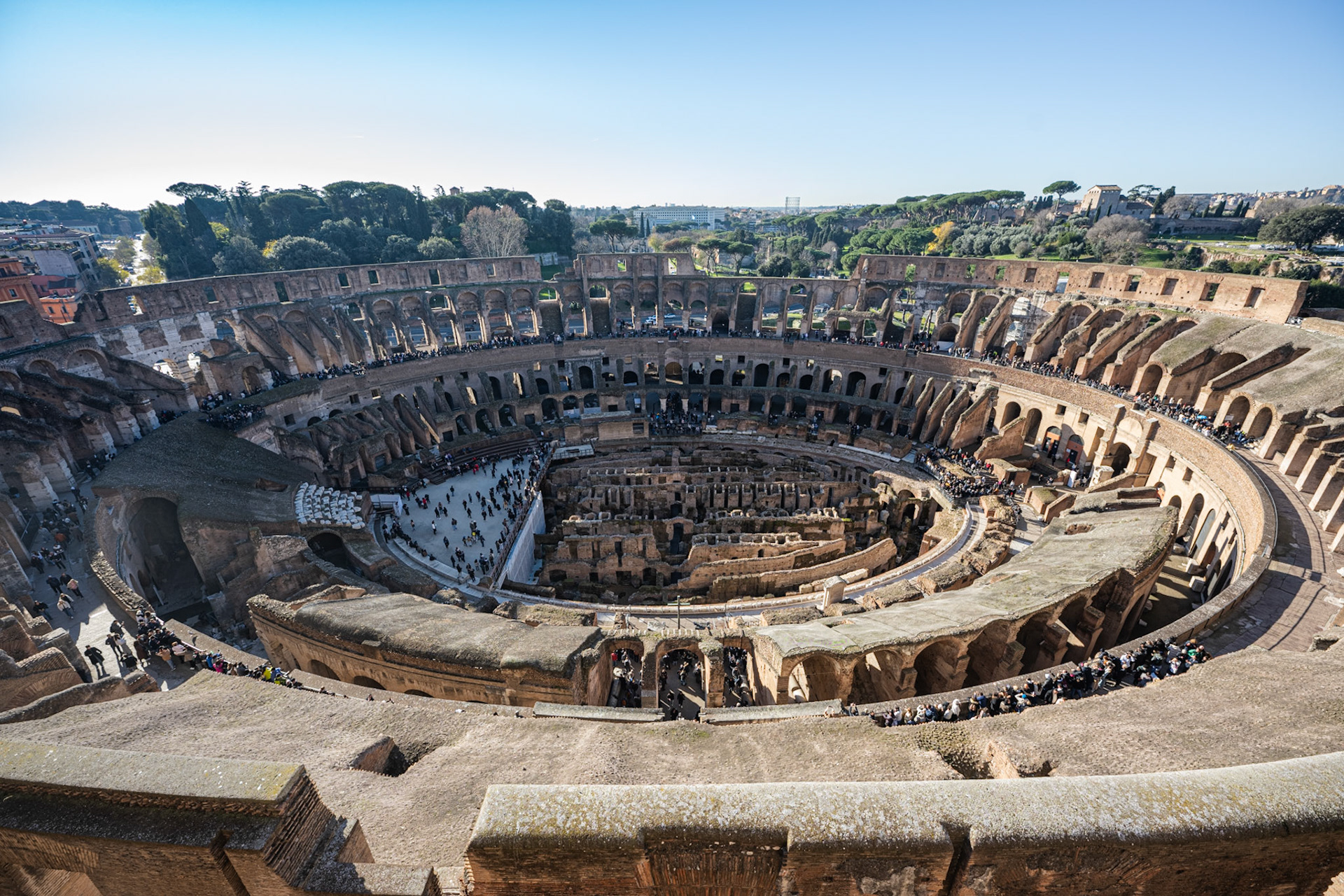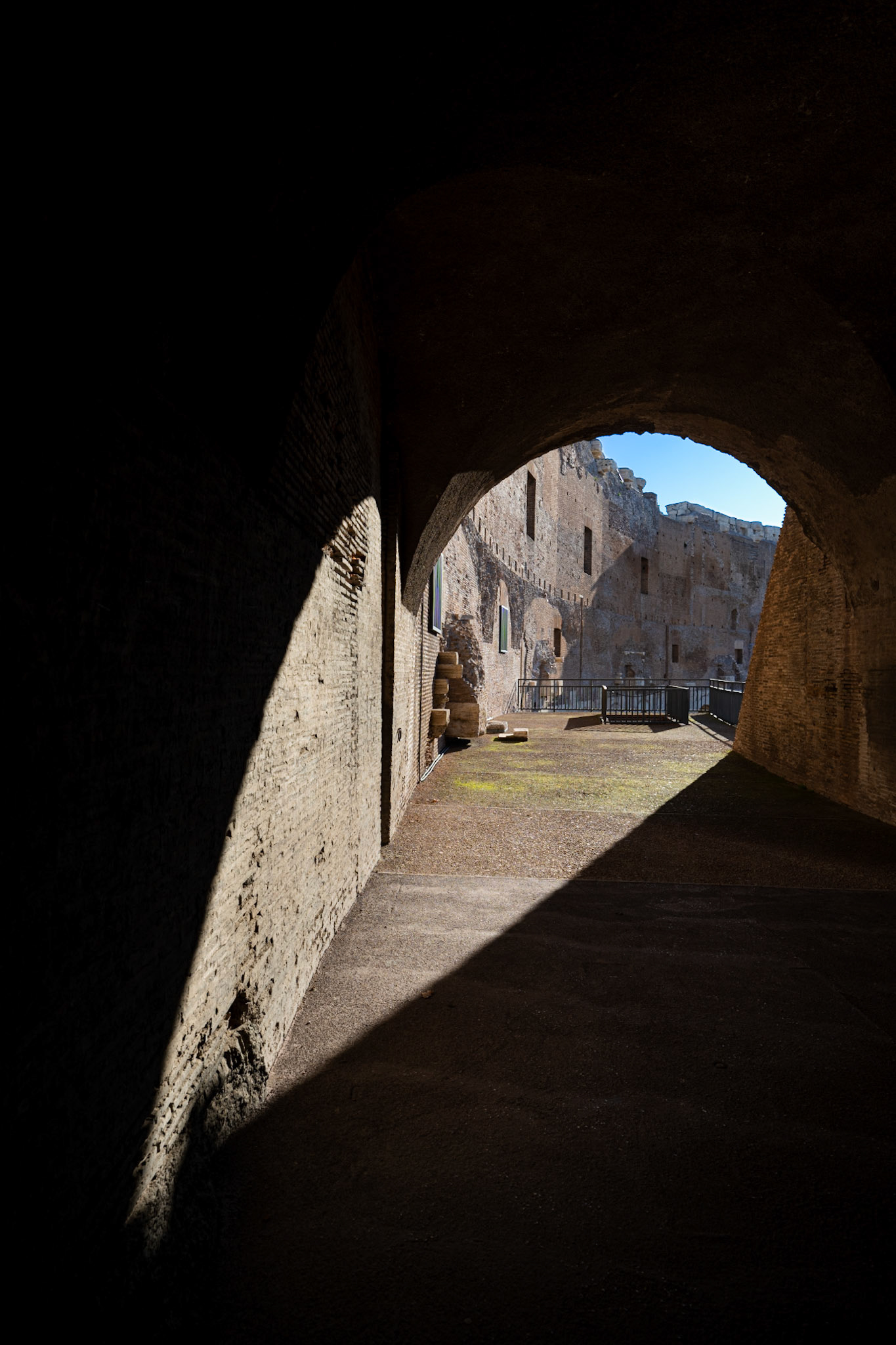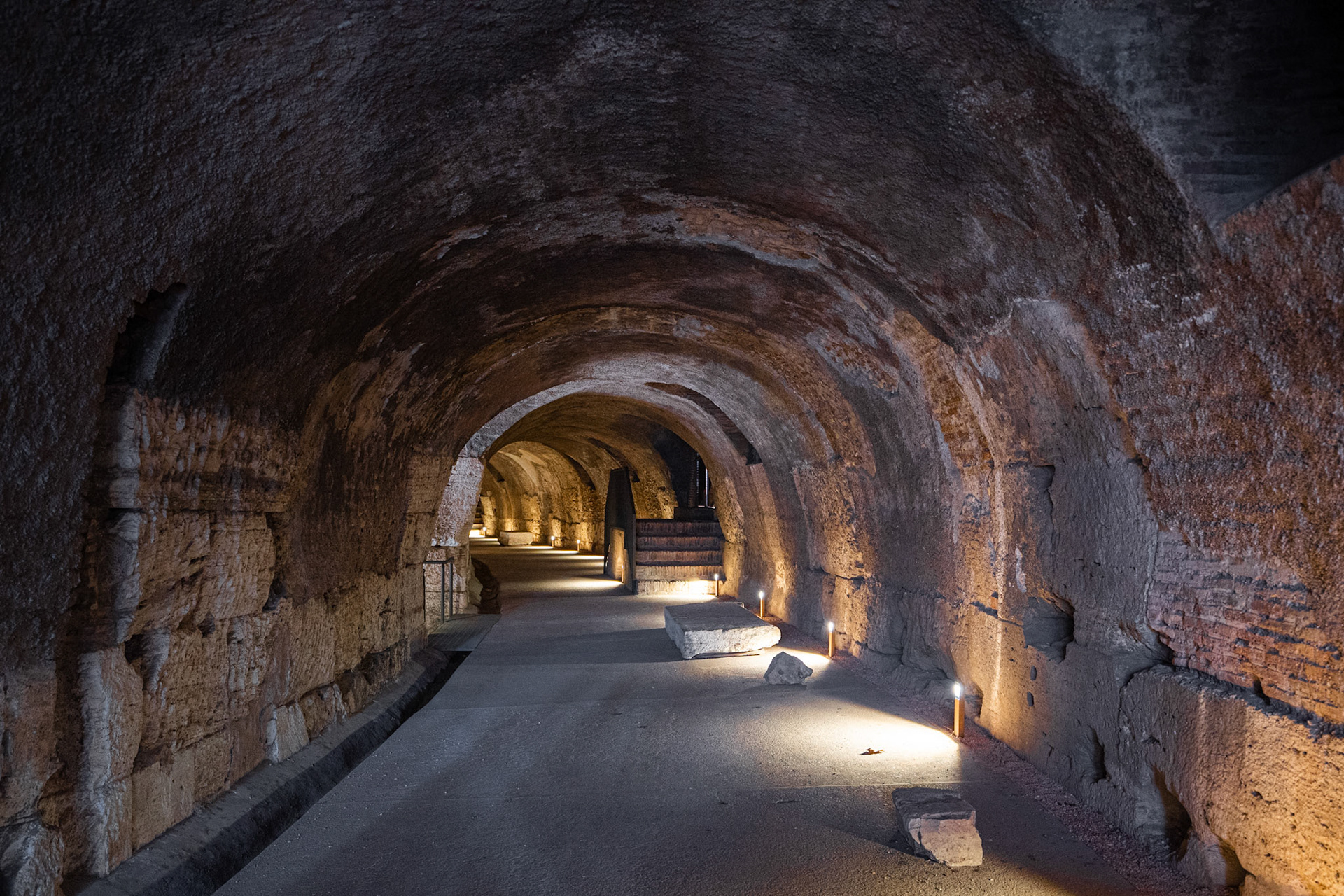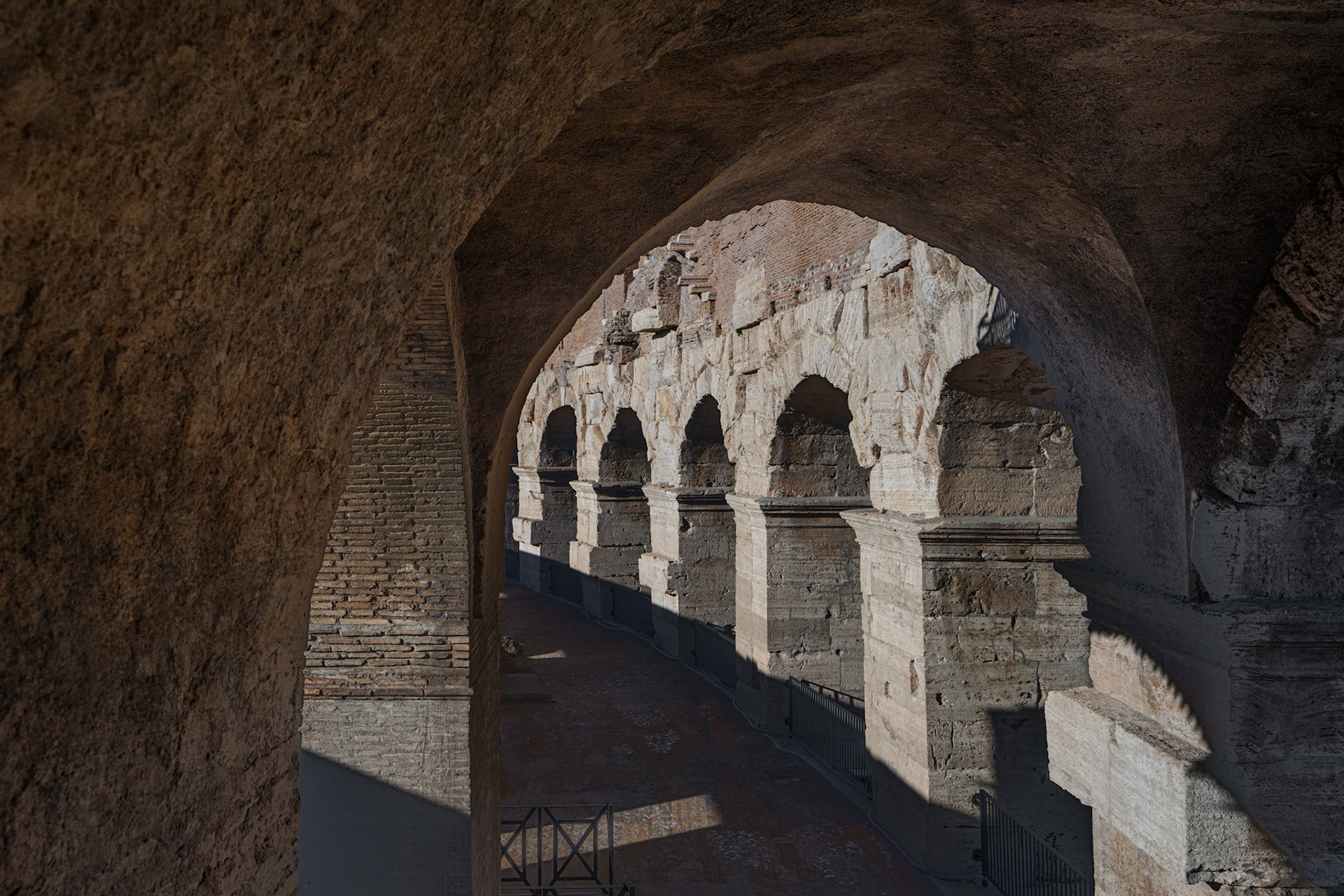The Colosseum, also known as the Flavian Amphitheater, was commissioned by Emperor Vespasian of the Flavian dynasty around 70–72 CE and was completed in 80 CE by his son and successor, Titus, with later modifications by Emperor Domitian. The amphitheater could host a wide range of events, including gladiatorial games, animal hunts, executions, and naval battles when the arena was flooded. It could accommodate over 50,000 spectators, reflecting its monumental scale and importance in Roman public life.
The Colosseum is an elliptical structure measuring 189 meters in length, 156 meters in width, and 48 meters in height. The Colosseum’s façade is built of travertine limestone, while the interior incorporates concrete and tuff. The arena floor was originally made of wood and covered with sand. Below the arena lies the hypogeum, an elaborate two-level underground network of tunnels and chambers used to house animals, gladiators, and stage equipment. Mechanical elevators and trapdoors allowed for dramatic entrances onto the arena floor.

Colosseum

Colosseum

Colosseum

Colosseum
You may also like